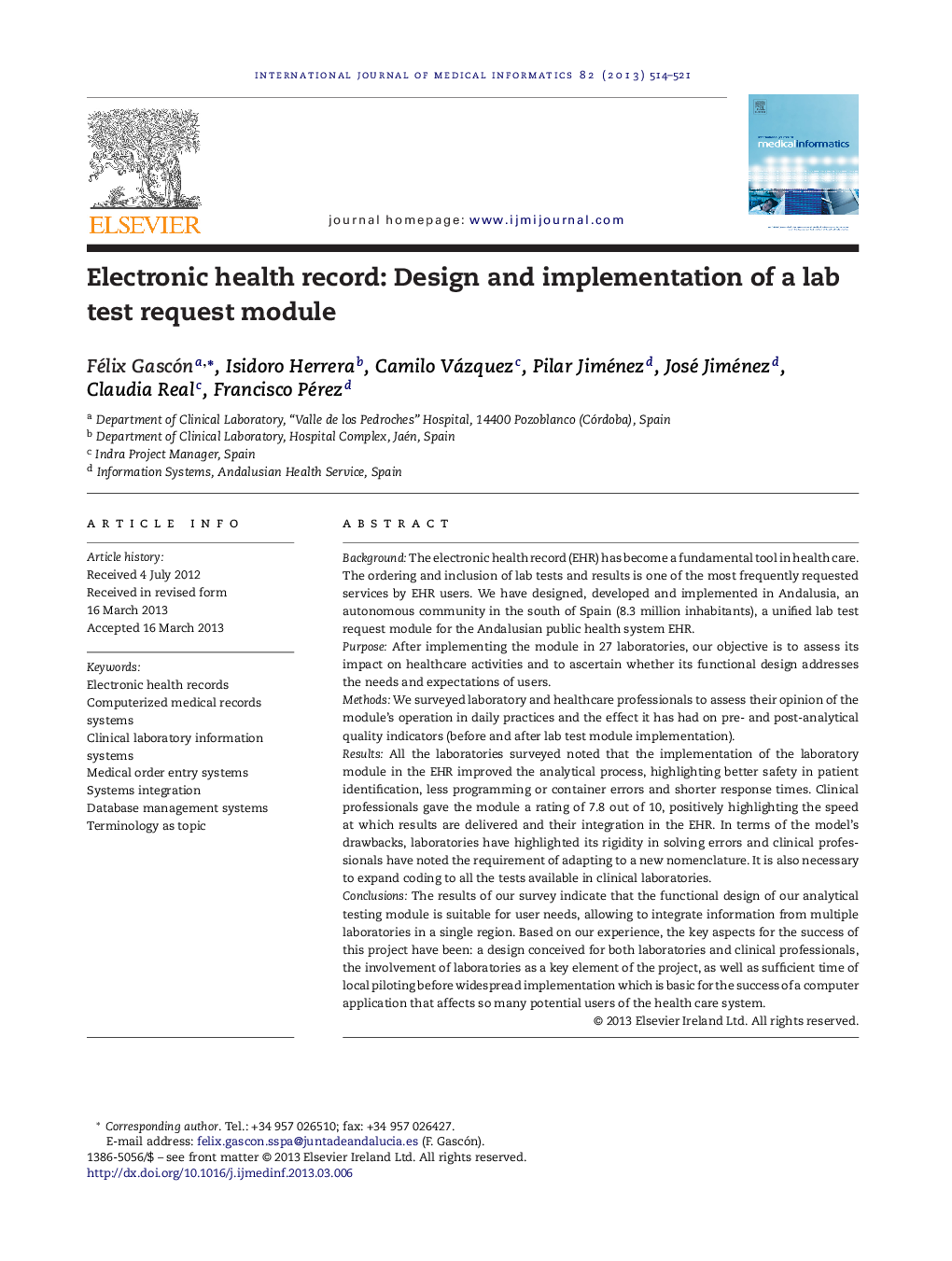| کد مقاله | کد نشریه | سال انتشار | مقاله انگلیسی | نسخه تمام متن |
|---|---|---|---|---|
| 516287 | 1449134 | 2013 | 8 صفحه PDF | دانلود رایگان |

• The model is based on a double system of coding, for the clinic and the laboratory.
• Traceability of labs’ methodology from different labs in the same medical record.
• LTM improves patient safety, pre-analytical quality and response times.
• Active involvement of lab professionals is fundamental for the LTM implementation.
BackgroundThe electronic health record (EHR) has become a fundamental tool in health care. The ordering and inclusion of lab tests and results is one of the most frequently requested services by EHR users. We have designed, developed and implemented in Andalusia, an autonomous community in the south of Spain (8.3 million inhabitants), a unified lab test request module for the Andalusian public health system EHR.PurposeAfter implementing the module in 27 laboratories, our objective is to assess its impact on healthcare activities and to ascertain whether its functional design addresses the needs and expectations of users.MethodsWe surveyed laboratory and healthcare professionals to assess their opinion of the module's operation in daily practices and the effect it has had on pre- and post-analytical quality indicators (before and after lab test module implementation).ResultsAll the laboratories surveyed noted that the implementation of the laboratory module in the EHR improved the analytical process, highlighting better safety in patient identification, less programming or container errors and shorter response times. Clinical professionals gave the module a rating of 7.8 out of 10, positively highlighting the speed at which results are delivered and their integration in the EHR. In terms of the model's drawbacks, laboratories have highlighted its rigidity in solving errors and clinical professionals have noted the requirement of adapting to a new nomenclature. It is also necessary to expand coding to all the tests available in clinical laboratories.ConclusionsThe results of our survey indicate that the functional design of our analytical testing module is suitable for user needs, allowing to integrate information from multiple laboratories in a single region. Based on our experience, the key aspects for the success of this project have been: a design conceived for both laboratories and clinical professionals, the involvement of laboratories as a key element of the project, as well as sufficient time of local piloting before widespread implementation which is basic for the success of a computer application that affects so many potential users of the health care system.
Journal: International Journal of Medical Informatics - Volume 82, Issue 6, June 2013, Pages 514–521